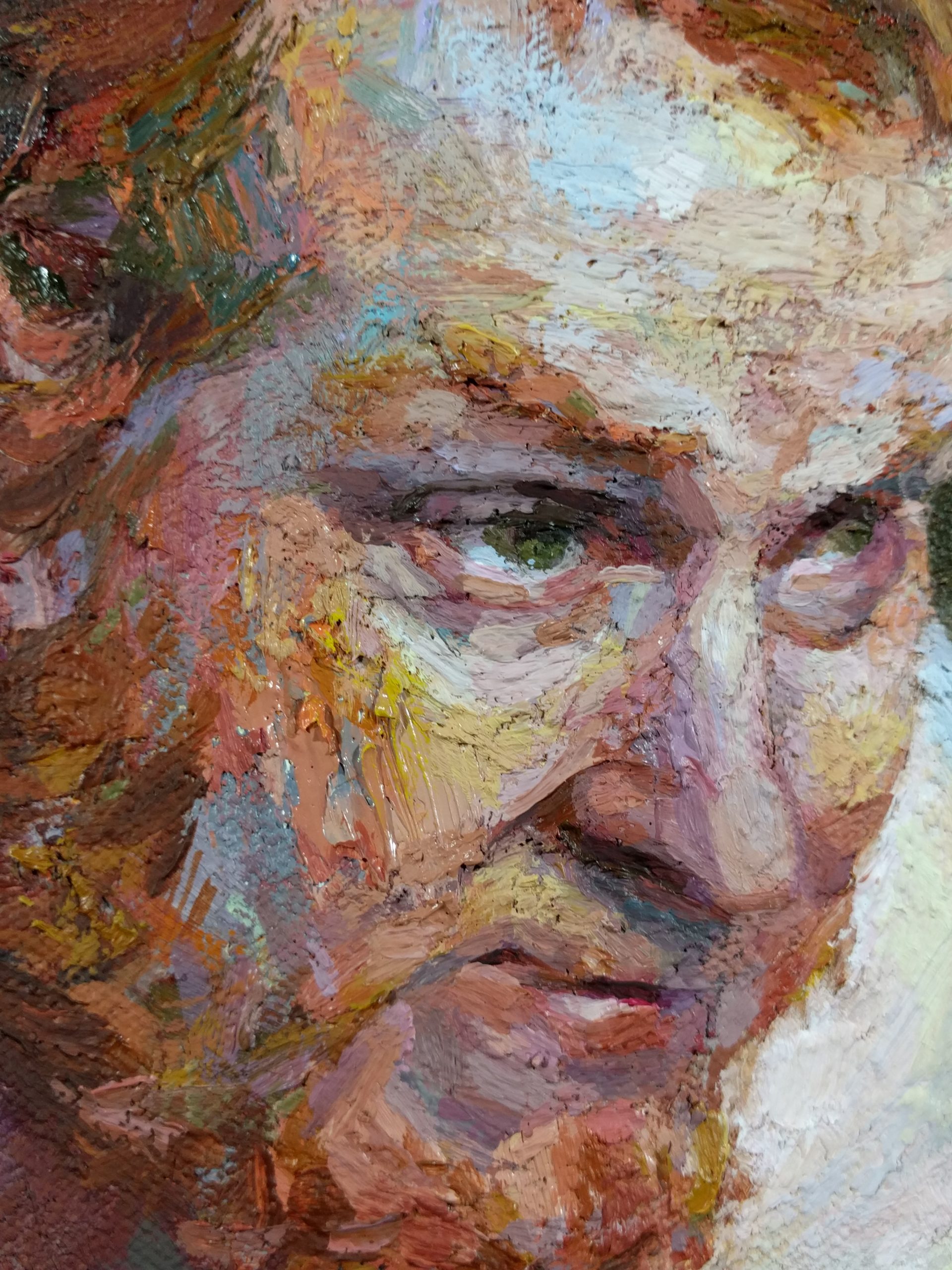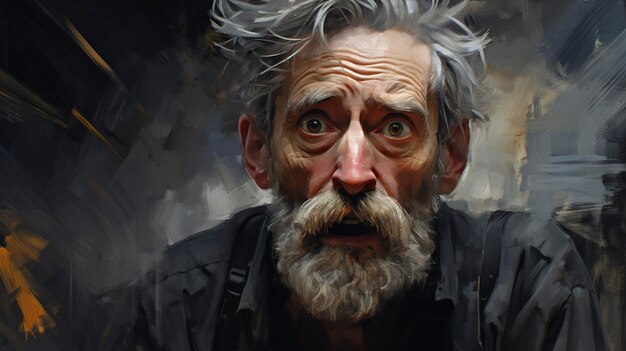Why Figurative Oil Painting Remains an Ageless Option for Artists
Why Figurative Oil Painting Remains an Ageless Option for Artists
Blog Article
The Function of Emotion and Expression in Figurative Oil Painting: An In-Depth Analysis of Topic and Structure
The interplay of emotion and expression in metaphorical oil paint serves as a crucial lens through which one can analyze the elaborate connection between subject issue and structure. Artists harness numerous methods, from shade choice to brushstroke characteristics, to cultivate emotional vibration within their jobs.
Recognizing Emotion in Art
Emotion in art acts as an effective avenue for expression, allowing artists to share complex feelings via their work. In figurative oil paint, this psychological depth is usually depicted with the representation of the human number, capturing the subtleties of human experience. The selection of topic, color scheme, and brushwork all add to the emotional vibration of an item.
Artists often bring into play individual experiences, social issues, or global themes to evoke feelings in the visitor. A picture might mirror susceptability, while a vibrant number in motion can symbolize freedom or turmoil. These psychological strings connect the audience to the artwork, promoting a discussion that goes beyond the aesthetic tool.
In addition, the interaction between light and shadow can enhance emotional intensity, assisting the visitor's stare and accentuating certain elements within the make-up. The usage of structure in oil painting even more adds layers of intricacy, inviting a tactile feedback that boosts the emotional experience. Generally, comprehending feeling in art is crucial for valuing the nuances that define figurative oil painting, as it changes plain representation into a profound expedition of the human problem.
Crucial Element of Make-up
In the realm of figurative oil painting, the structure offers as the underlying framework that organizes aesthetic elements and improves the psychological story. Crucial elements of structure include equilibrium, contrast, prime focus, and rhythm, each adding to the overall influence of the artwork.
Balance describes the distribution of aesthetic weight within the painting, which can be achieved via unbalanced or in proportion arrangements. A healthy structure offers security, enabling the viewer to involve with the piece harmoniously - figurative oil painting. Comparison, on the various other hand, involves juxtaposing different components, such as dark and light or cozy and trendy shades, to guide the visitor's eye and evoke emotional feedbacks
The focal point is crucial, as it routes interest to one of the most substantial component of the paint, typically highlighting the emotional core of the narrative. Via strategies like shade saturation or positioning, musicians can highlight this location successfully. Rhythm pertains to the rep of aspects, creating a feeling of activity and circulation throughout the structure. By masterfully integrating these essential elements, artists can craft compelling and mentally powerful metaphorical oil paints that captivate and engage their audience.
Topic and Its Impact
Topic plays a pivotal function in figurative oil painting, as it not only acts as the foundation for the story yet also forms the customer's interpretation and psychological interaction with the art work. The choice of subject matter-- be it a solitary number, a team dynamic, or a thematic representation-- directly influences the psychological atmosphere communicated to the audience.

For example, pictures often evoke individual links, exposing the ins and outs of human expression and personality, while scenes showing public tasks can create a feeling of belonging or fond memories. Moreover, the historical and social context of the subject enhances the viewer's understanding, motivating deeper representations on societal norms, worths, and the human condition.
Different subjects additionally create differing levels of involvement; a remarkable conflict shown through figures in stress might elicit sensations of anxiety or compassion, while peaceful landscapes can conjure up peace and contemplation. Eventually, the influence of subject in figurative oil paint is profound, as it offers as a channel for emotional resonance, leading the customer's reaction and interpretation, and fostering a link between the artwork and the onlooker. This interaction is essential for the effective interaction of the musician's intent.
Methods for Evoking Feelings
The efficiency of metaphorical oil paint in sharing emotions is considerably influenced by the strategies used by the artist. Among the most vital techniques is using shade concept, where the calculated option of tones can stimulate details emotional reactions. Warm colors, such as reds and oranges, commonly generate sensations of enthusiasm or aggressiveness, while cooler tones like blues and environment-friendlies have a tendency to evoke calmness or sadness.
An additional essential technique is the adjustment of light and darkness, referred to as chiaroscuro. This technique improves the three-dimensionality of figures, creating significant contrasts that can heighten psychological depth. The placement of light can lead visitors' feelings, highlighting details aspects of the structure.
Brushwork also plays an essential duty; loose, meaningful strokes can communicate energy and spontaneity, whereas smoother strategies may suggest tranquility or accuracy. The arrangement of topics within the composition can affect emotional influence. Close distance can suggest affection, while distance might indicate seclusion.
Eventually, the combination of these strategies allows musicians to craft narratives that reverberate with the audience, changing a plain visual experience right into an expressive emotional trip. - figurative oil painting

Study of Remarkable Works
Checking out significant jobs of figurative oil paint reveals just how various methods are utilized to stimulate effective emotions. One exemplary situation is Edvard Munch's "The Scream," where the altered number and swirling history convey existential dread. Munch's use shade-- deep blues and brilliant oranges-- magnifies the psychological influence, showcasing how palette options can shape visitor experience.
One more substantial job is Pablo Picasso's "Les Demoiselles d'Avignon." Below, strong brushstrokes and fragmented types mirror a turbulent emotional landscape, challenging conventional representations of the women number. Picasso's innovative composition not only captures the audience's interest however likewise welcomes consideration on themes of identity and sexuality.
Furthermore, Frida Kahlo's "Both Fridas" supplies a touching exploration of duality and self-identity. The contrasting numbers, connected by a common heart, exemplify Kahlo's psychological deepness and individual story. figurative oil painting. Her meticulous attention to information and symbolic aspects serve to involve customers on a visceral degree
These study underscore the extensive link in between emotion and make-up in metaphorical oil painting, exposing exactly how artists harness technique to interact complicated feelings and narratives that resonate across time and culture.

Conclusion
To conclude, the interaction of feeling and expression in metaphorical oil painting significantly boosts the visitor's experience check my blog and analysis of the artwork. With a cautious option of subject matter and compositional strategies, artists share extensive stories that resonate on both universal and personal levels. The application of color brushwork, chiaroscuro, and concept more amplifies emotional depth, changing each special info canvas into an effective representation of the complexities of the human experience.
In figurative oil painting, this emotional deepness is frequently represented via the depiction of the human figure, capturing the subtleties of human experience.In addition, the interplay between light and shadow can magnify psychological intensity, directing the viewer's look and attracting attention to certain aspects within the composition. The use of appearance in oil painting even more adds layers of complexity, inviting a tactile reaction that improves the psychological experience.The focal factor is crucial, as it guides focus to the most news substantial component of the paint, commonly highlighting the emotional core of the narrative. Ultimately, the effect of subject issue in figurative oil paint is profound, as it offers as an avenue for psychological vibration, assisting the customer's action and analysis, and cultivating a link between the artwork and the onlooker.
Report this page